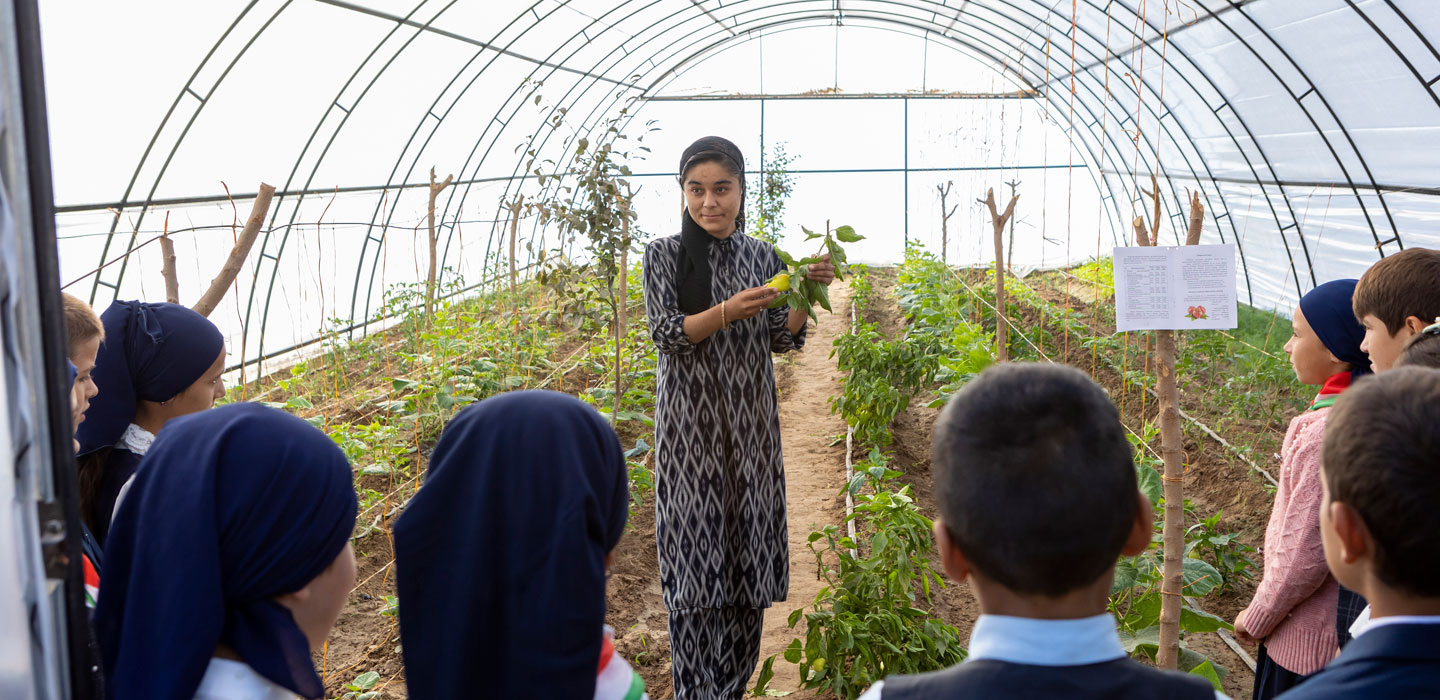Everyone wins with school meals
IFAD Asset Request Portlet
Asset Publisher
Everyone wins with school meals
Estimated reading time: 3 minutes
Nearly a third of the world’s population experienced food insecurity in 2022. Children, who need enough diverse nutritious food to develop healthily, are most affected.
Concurrently, small-scale farmers are disproportionately poor and often find it hard to find reliable buyers for their produce.
Home-grown school feeding can square the circle. With well-balanced, fresh meals at school, every child can get the right nutrition at the right age and learn to make food choices that set them up for a life of good health, while small-scale farmers have a reliable buyer.
Enshrined in law
 |
| A 2017 law in Guatemala ensures children receive nutritious meals at school. © IFAD/Juan I. Cortés |
When Guatemala passed its School Nutrition Law in 2017, the country was struggling with high rates of malnutrition. This Law ensures that children receive nutritious school meals, and that half of the produce comes from local farmers.
IFAD, FAO and WFP are working to turn this vision into reality, by bringing healthy meals to more than 12,000 children in 60 schools. Even when the COVID-19 pandemic meant schools closed, parents collected the fresh food to cook at home so the poorest children could continue to thrive.
There’s still a long way to go, but with the school meals programme, there’s hope that malnutrition will eventually become a distant memory—in both Guatemala and beyond. For example, IFAD is helping Cuba, Kenya and Senegal link small-scale farmers with school feeding programmes.
Green skills
 |
| School gardener Mahmadkarim Rakhimov grows fresh produce inside a greenhouse. © IFAD/Didor Sadulloev |
The Vakhsh village school in southwestern Tajikistan is one of 28 schools producing fresh food thanks to the IFAD-funded School Feeding Support Programme, which supports more than 10,000 school children aged between seven and 10.
The school kitchens were once in such terrible shape that the cook had to prepare the meals on an outdoor firewood grill. The project replaced the school’s wood-burning stoves with electric ovens, provided tables and benches for the children to eat at, refurbished the kitchens and set up a greenhouse which is maintained by a gardener, Mahmadkarim Rakhimov, who grows vegetables, like peppers, cucumbers and tomatoes.
Meanwhile, small-scale farmers (known locally as dehkan) received greenhouses and irrigation equipment in exchange for giving 40 per cent of what they grow in them to the school. The rest they sell at local markets.
Schoolchildren get delicious fresh food all year round, that helps them grow better, while learning about nutrition. “We show the children how to grow vegetables in the greenhouse,” says Rakhimov. “This is a life skill that they can take back with them to their homes.”
Communities care
Similar models are cropping up around the world, many with IFAD support.
In Odisha in eastern India, working parents leave their children at OPELIP-supported community creches, secure in the knowledge that they will play, learn and eat nutritious food from the kitchen gardens.
Not only are younger children eating better, but school attendance is also up as older siblings no longer have to stay home to care for them.
Similarly, in Cameroon’s vibrant forests, Bakola and Bagyeli communities are ensuring that school children eat well as they learn. Funded by IFAD’s Indigenous Peoples Assistance Facility, these communities have established an award-winning 10-hectare plantation to grow food for children attending the local school.
Serving nutritious school meals ensures that even the poorest children have the foundations for a healthy life. Small-scale farmers can get locally grown food to the children who need it, when they need it, while earning a decent income. It’s a win-win!
Publication date: 17 October 2023